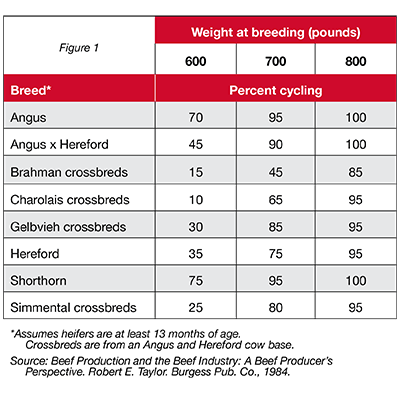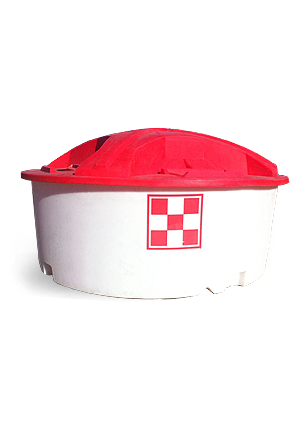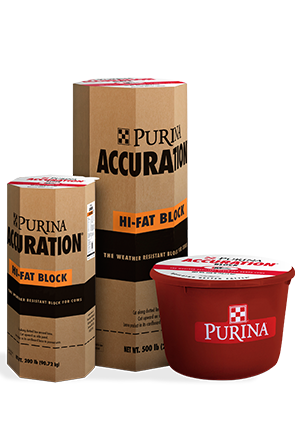
Tips to Build Successful Replacement Heifers
Management : Replacement

Developing replacement heifers is a fancy way to say, “raising your future cows.” It’s also a long-term investment because the payoff is a better future herd.
Maximize your potential return on investment by focusing on four areas:
Here are recommendations for building a total program:Hit target heifer weight
The first question to ask yourself in building your future cow is, “What’s the correct amount of growth needed?”
Determine growth based on breed type to ensure you reach the right weight at 13 months of age for all heifers. Each breed has different heifer weight goals at breeding, as outlined in Figure 1.
Based on Figure 1, the target Angus heifer weight should be 700 pounds at breeding to maximize the number of heifers cycling. However, a Simmental crossbred should be 800 pounds because at 700 pounds you’ll potentially have 15 percent fewer heifers cycling.
Targeting heifers to be the right weight gives them the highest opportunity to become pregnant. Strive for every single animal to reach the target heifer weight at breeding.
Weaning is your first step to hitting target weight. If you’re feeding calves a commodity mix, you may not see optimal weight gain and calf health. A solid weaning-time nutrition program can ensure calves gain weight and stay healthy.
Here are two weaning programs to give calves a jump-start on the growing process:
Program 1 relies on using pasture or hay with at least 8 percent crude protein. Pasture or hay is supplemented with Stress Care® 5 Supplement (bunk fed) and Wind and Rain® Storm® Cattle Mineral Tubs with Availa® 4. Average daily gain can range from 1.5 to 2.5 pounds per head per day based on pasture or hay quality.
Program 2 uses Accuration® Starter Feed, a complete feed which is self-fed free-choice, or bunk-fed to appetite (up to two times per day). This program works best in confined settings. Average daily gain can range from 2.75 to 3.25 pounds per head per day.
For replacement heifers post-weaning and pre-breeding, develop them on pasture or hay with supplemental Accuration® Cattle Limiters and Wind and Rain® Storm® Cattle Mineral. Monitor heifer weight up to breeding to ensure cattle are on track to reach target weight.
After breeding, continue a slower rate of growth with Accuration® Liquid Supplement or Accuration® Hi-Fat Block and Wind and Rain® Storm® Cattle Mineral. Target a body condition score (BCS) of 6 at calving for successful rebreeding.
Remember, first-calf heifers are your most vulnerable animals – they’re lactating, they have a calf at side, and you’re trying to prepare them to breed back again. They need extra energy and attention. To maintain them at a body condition score 5.5, feed them separately from the rest of the cow herd.
Feed high-quality grass or hay, Accuration® Liquid Supplement or Accuration® Hi-Fat Block, and Wind and Rain® Storm® Cattle Mineral.
Set replacement heifers up to take the place of existing females and be better than your current cow herd. By putting a total program together, you’re not leaving anything to chance.
Like this information? Sign up to receive our monthly management tips. Or, check out these three refreshers for your replacement heifer program.
Maximize your potential return on investment by focusing on four areas:
- Hit target heifer weight based on breed type
- Start replacement heifers right at weaning or purchase
- Get replacement heifers bred and rebred at the right age
- Have replacement heifers look like future cows
Here are recommendations for building a total program:
Hit target heifer weight
The first question to ask yourself in building your future cow is, “What’s the correct amount of growth needed?”Determine growth based on breed type to ensure you reach the right weight at 13 months of age for all heifers. Each breed has different heifer weight goals at breeding, as outlined in Figure 1.
Based on Figure 1, the target Angus heifer weight should be 700 pounds at breeding to maximize the number of heifers cycling. However, a Simmental crossbred should be 800 pounds because at 700 pounds you’ll potentially have 15 percent fewer heifers cycling.
Targeting heifers to be the right weight gives them the highest opportunity to become pregnant. Strive for every single animal to reach the target heifer weight at breeding.
Start replacement heifers right at weaning
Once you’ve determined the target heifer weight for breeding, shift focus to a target weight feeding strategy.Weaning is your first step to hitting target weight. If you’re feeding calves a commodity mix, you may not see optimal weight gain and calf health. A solid weaning-time nutrition program can ensure calves gain weight and stay healthy.
Here are two weaning programs to give calves a jump-start on the growing process:
Program 1 relies on using pasture or hay with at least 8 percent crude protein. Pasture or hay is supplemented with Stress Care® 5 Supplement (bunk fed) and Wind and Rain® Storm® Cattle Mineral Tubs with Availa® 4. Average daily gain can range from 1.5 to 2.5 pounds per head per day based on pasture or hay quality.
Program 2 uses Accuration® Starter Feed, a complete feed which is self-fed free-choice, or bunk-fed to appetite (up to two times per day). This program works best in confined settings. Average daily gain can range from 2.75 to 3.25 pounds per head per day.
Get replacement heifers bred and rebred
The goal is to get a replacement heifer bred and rebred and set up for success as a mature cow.For replacement heifers post-weaning and pre-breeding, develop them on pasture or hay with supplemental Accuration® Cattle Limiters and Wind and Rain® Storm® Cattle Mineral. Monitor heifer weight up to breeding to ensure cattle are on track to reach target weight.
After breeding, continue a slower rate of growth with Accuration® Liquid Supplement or Accuration® Hi-Fat Block and Wind and Rain® Storm® Cattle Mineral. Target a body condition score (BCS) of 6 at calving for successful rebreeding.
Your future cows
Continue using the Purina® All Seasons™ Cattle Nutrition Program after calving. Strive to maintain first-calf heifers at a body condition score of 5.5. Anything less than this could result in reduced breed back rates.Remember, first-calf heifers are your most vulnerable animals – they’re lactating, they have a calf at side, and you’re trying to prepare them to breed back again. They need extra energy and attention. To maintain them at a body condition score 5.5, feed them separately from the rest of the cow herd.
Feed high-quality grass or hay, Accuration® Liquid Supplement or Accuration® Hi-Fat Block, and Wind and Rain® Storm® Cattle Mineral.
Set replacement heifers up to take the place of existing females and be better than your current cow herd. By putting a total program together, you’re not leaving anything to chance.
Like this information? Sign up to receive our monthly management tips. Or, check out these three refreshers for your replacement heifer program.



.png?width=300&height=430&ext=.png)